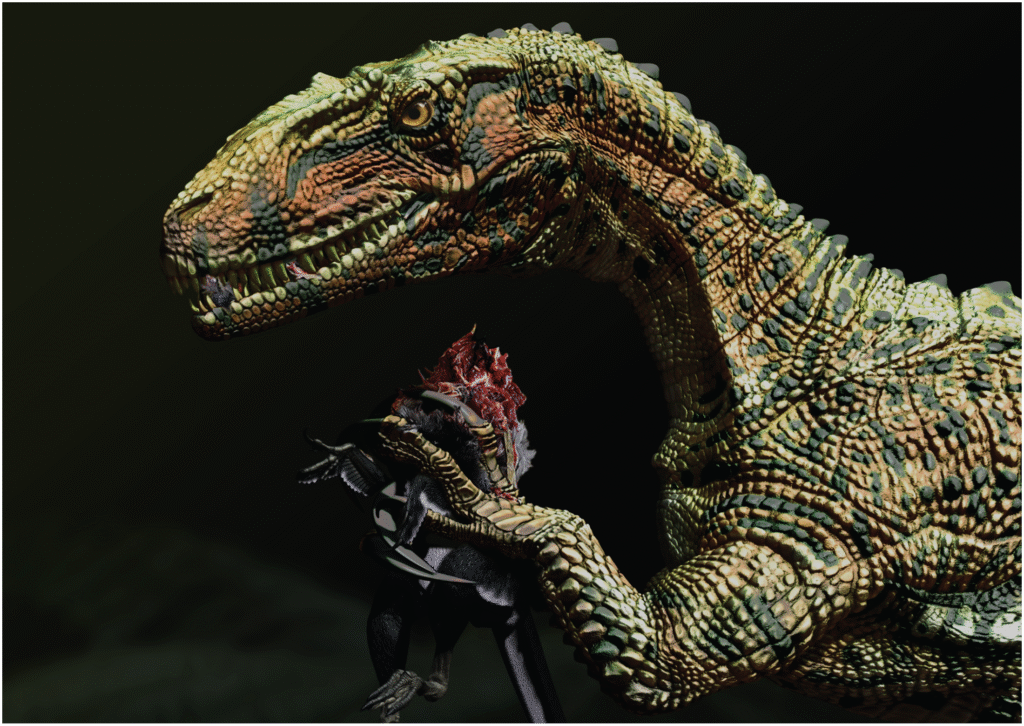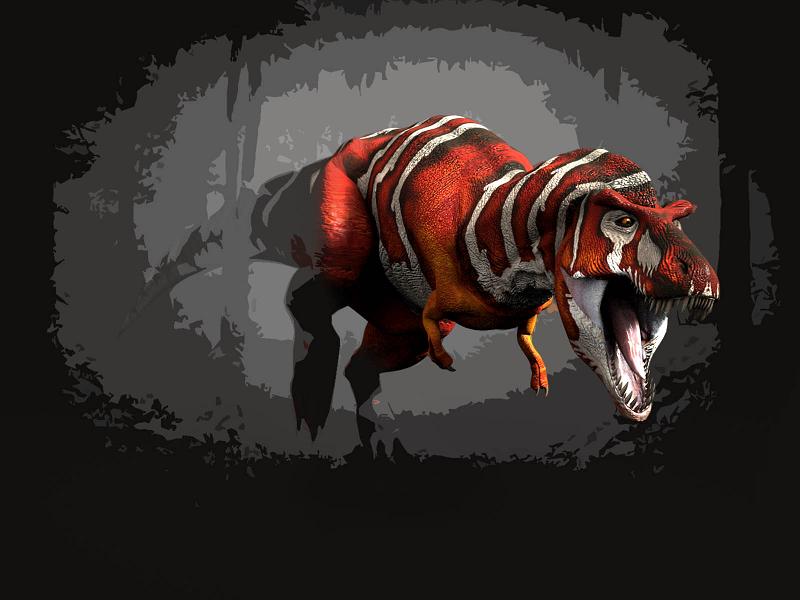Prowling through the dense forests of what is now Alberta, Canada, some 70 million years ago, Albertosaurus sarcophagus reigned as one of North America’s most formidable predators of the Late Cretaceous period. This iconic tyrannosaurid dinosaur, whose name translates to “Alberta lizard,” has become a symbol of Canada’s rich paleontological heritage. Discovered in the late 19th century, Albertosaurus has provided scientists with crucial insights into dinosaur evolution, behavior, and the prehistoric ecosystems of North America. Its relatively abundant fossil record has made it one of the best-understood tyrannosaurs, revealing a fascinating creature that combined power, speed, and predatory intelligence. As we explore the story of Albertosaurus, we uncover not just facts about a dinosaur but a window into a lost world that once dominated the Canadian landscape.
Discovery and Naming: The Birth of a Canadian Icon
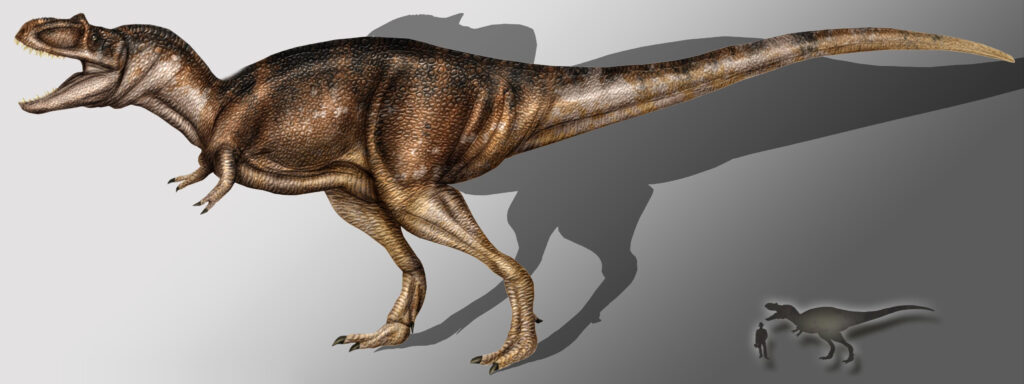
The story of Albertosaurus begins in 1884 when Canadian geologist Joseph B. Tyrrell stumbled upon a partial skull of the dinosaur in Alberta’s Horseshoe Canyon Formation along the Red Deer River. This chance discovery would ultimately become one of Canada’s most significant paleontological finds and marked the first tyrannosaur discovered in the country. The genus received its official scientific name, Albertosaurus sarcophagus, from paleontologist Henry Fairfield Osborn in 1905, combining “Alberta” for the province of discovery with “saurus” (Greek for lizard), while the species name “sarcophagus” (flesh-eater) referenced its carnivorous nature. Tyrrell’s discovery not only put Canadian paleontology on the world map but also initiated more than a century of research into this remarkable predator. The early excavations were challenging endeavors in remote terrain, often requiring teams to navigate difficult landscapes with limited equipment but unbounded scientific enthusiasm.
Anatomical Features: Built for the Hunt
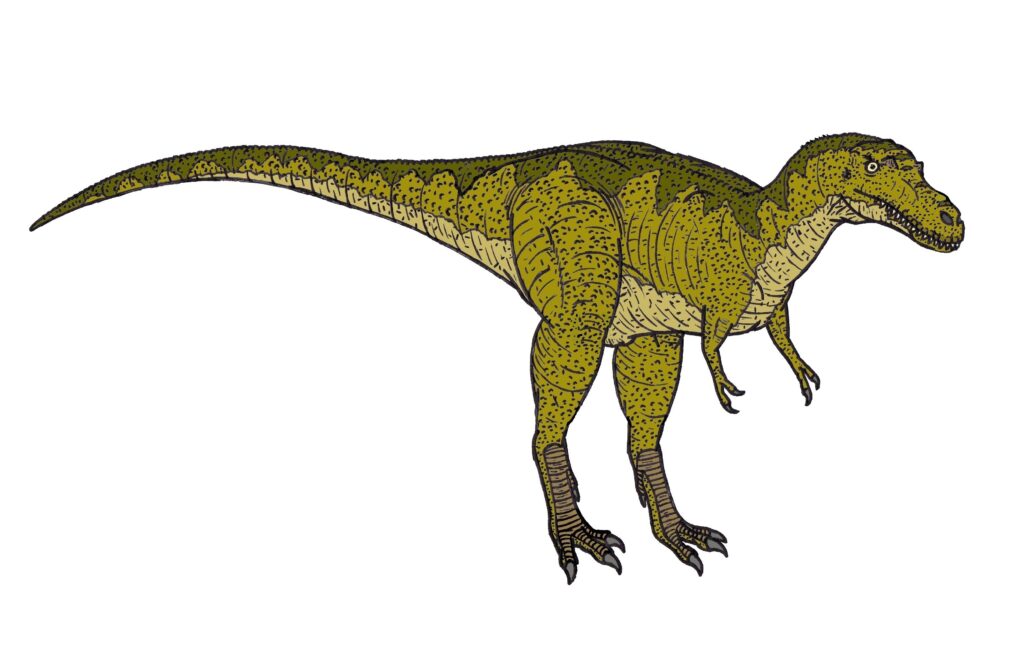
Albertosaurus exhibited the classic tyrannosaurid body plan but with its distinctive features that set it apart from relatives like Tyrannosaurus rex. Reaching lengths of about 9-10 meters (30-33 feet) and standing approximately 3.5 meters (11 feet) tall at the hip, Albertosaurus was significantly smaller than T. rex but still an imposing predator. Its skull, measuring up to 1 meter (3.3 feet) in length, featured approximately 60 banana-shaped teeth perfectly designed for slicing through flesh and crushing bone. One of Albertosaurus’s most notable characteristics was its relatively slender build compared to other tyrannosaurids, suggesting it may have been a faster, more agile hunter. Its forelimbs, while small like those of all tyrannosaurs, bore two clawed fingers that likely served in manipulating prey. The powerful hind limbs and relatively long, counterbalancing tail point to a dinosaur built for pursuit rather than ambush, making it a terrifying presence in the Late Cretaceous landscape.
Habitat and Range: The Ancient Alberta Landscape

During the Late Cretaceous period, approximately 70-68 million years ago, the environment that Albertosaurus inhabited was dramatically different from the Alberta we know today. The region featured a warm, humid climate with vast coastal plains and river deltas bordering the Western Interior Seaway, a massive inland sea that divided North America. This lush landscape supported diverse plant life, including conifers, ginkgoes, ferns, and early flowering plants that provided food for the herbivorous dinosaurs that Albertosaurus hunted. Fossil evidence suggests that Albertosaurus’s range was primarily concentrated in what is now western Canada, particularly throughout Alberta and potentially extending into parts of Montana in the United States. The rich fossil beds of the Horseshoe Canyon Formation have yielded the majority of Albertosaurus specimens, indicating this area was a particular stronghold for the species. These varied ecosystems, with their mosaic of forests, open plains, and water sources, provided ideal hunting grounds for this apex predator as it pursued prey through a landscape that would be unrecognizable to modern eyes.
Diet and Hunting Behavior: The Tactics of a Predator
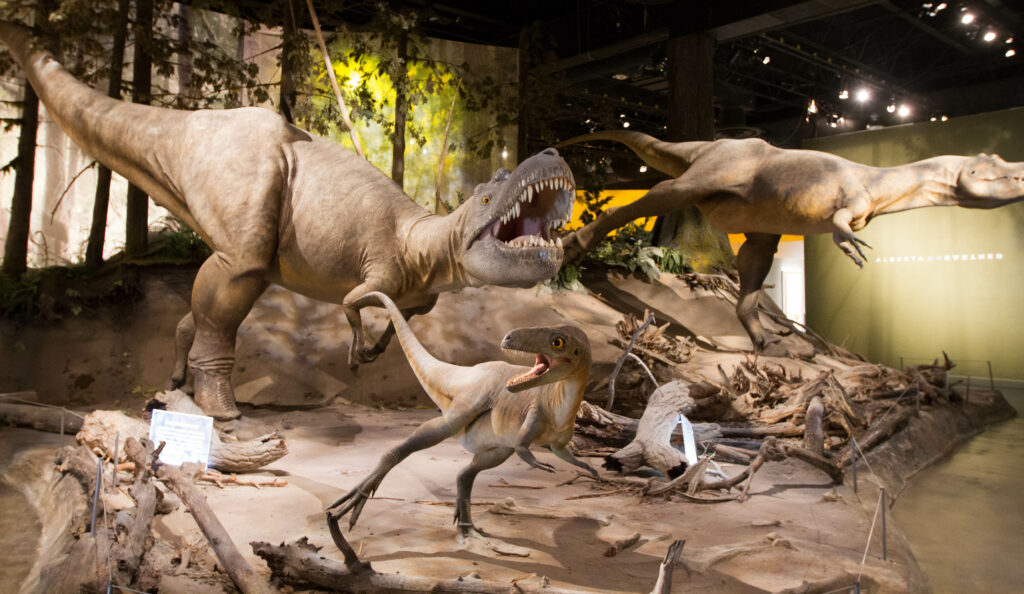
As the apex predator of its ecosystem, Albertosaurus demonstrated sophisticated hunting capabilities that made it a formidable force in Late Cretaceous food webs. Its diet primarily consisted of the various herbivorous dinosaurs that shared its habitat, including hadrosaurs (duck-billed dinosaurs), ceratopsians like Pachyrhinosaurus, and possibly smaller ornithomimids. Evidence from bite marks on fossilized bones suggests that Albertosaurus employed powerful, penetrating bites to take down prey, potentially hunting in coordinated groups to tackle larger animals. With binocular vision providing decent depth perception and a highly developed sense of smell, Albertosaurus possessed the sensory toolkit of an accomplished hunter. Biomechanical studies of its legs indicate it could reach speeds of approximately 25-30 mph in short bursts, allowing it to overtake many of its potential prey species. Unlike the more massive Tyrannosaurus rex, which relied heavily on overwhelming bite force, Albertosaurus may have employed a more dynamic hunting strategy, using its relative agility and pack behavior to pursue and exhaust prey before delivering killing bites with its serrated teeth.
The Dry Island Bone Bed: Evidence of Social Behavior

One of the most remarkable Albertosaurus discoveries occurred at the Dry Island Buffalo Jump Provincial Park in Alberta, where paleontologist Barnum Brown uncovered the remains of at least 26 individuals of varying ages in 1910, though the significance of this find wasn’t fully appreciated until decades later. This extraordinary bone bed provides compelling evidence that Albertosaurus may have lived and hunted in social groups, challenging earlier assumptions that large tyrannosaurs were primarily solitary creatures. The assemblage includes juvenile, sub-adult, and mature specimens, suggesting a complex social structure potentially similar to modern pack hunters. The cause of this mass death event remains debated, with theories ranging from a catastrophic flood to a drought that concentrated animals around dwindling water sources. Detailed analysis of the bone bed conducted by Dr. Philip Currie in the late 1990s revolutionized our understanding of tyrannosaur behavior, suggesting these animals may have hunted cooperatively, with younger, more agile individuals potentially driving prey toward the more powerful adults. This groundbreaking site continues to yield insights into dinosaur social dynamics and represents one of the most significant Albertosaurus discoveries in paleontological history.
Growth and Life Cycle: From Hatchling to Apex Predator

The growth pattern of Albertosaurus represents one of the best-documented life histories among large theropod dinosaurs, thanks to the discovery of specimens representing multiple growth stages. Hatching from eggs likely similar to those of other large theropods, juvenile Albertosaurus began life as relatively slender, fast-moving predators that looked noticeably different from their adult counterparts. Growth rate analyses conducted on fossilized bones reveal that these dinosaurs experienced an extraordinary growth spurt during their teenage years, potentially gaining over 300 pounds annually during this rapid development phase. By studying growth rings in fossilized bones (similar to tree rings), scientists have determined that Albertosaurus reached sexual maturity at approximately 14-16 years of age, while full adult size was attained around 20-23 years. Maximum lifespan estimates suggest these animals could live about 30 years in optimal conditions, though predator-prey dynamics and environmental challenges likely meant many never reached this advanced age. This detailed understanding of Albertosaurus’s growth pattern has provided valuable insights into dinosaurian metabolic systems and life history strategies that bridge the gap between modern reptiles and birds.
Evolutionary Significance: Albertosaurus in the Tyrannosaur Family Tree

Albertosaurus occupies a crucial position in tyrannosaurid evolution, representing an intermediate stage between earlier, smaller tyrannosauroids and the massive apex predators like Tyrannosaurus that appeared later in the Cretaceous period. Evolving approximately 70-73 million years ago, Albertosaurus shares a close relationship with its slightly older relative Gorgosaurus, with some paleontologists even suggesting they might represent the same genus (though most maintain they are distinct). Anatomical studies reveal that Albertosaurus possessed a skull structure showing evolutionary innovations that would later be refined in Tyrannosaurus, particularly in jaw mechanics and bite force adaptation. The more gracile build of Albertosaurus compared to later tyrannosaurids illustrates an evolutionary trajectory toward increasingly powerful but less agile predators as the Cretaceous progressed. Phylogenetic analyses place Albertosaurus firmly within the Albertosaurinae subfamily of tyrannosaurids, making it a crucial transitional form that helps scientists understand how these iconic dinosaurs evolved their remarkable predatory adaptations. This evolutionary position makes Albertosaurus particularly valuable for understanding the radiation of tyrannosaurid dinosaurs across the Northern Hemisphere during the Late Cretaceous period.
Contemporary Dinosaurs: The Ecosystem Around Albertosaurus
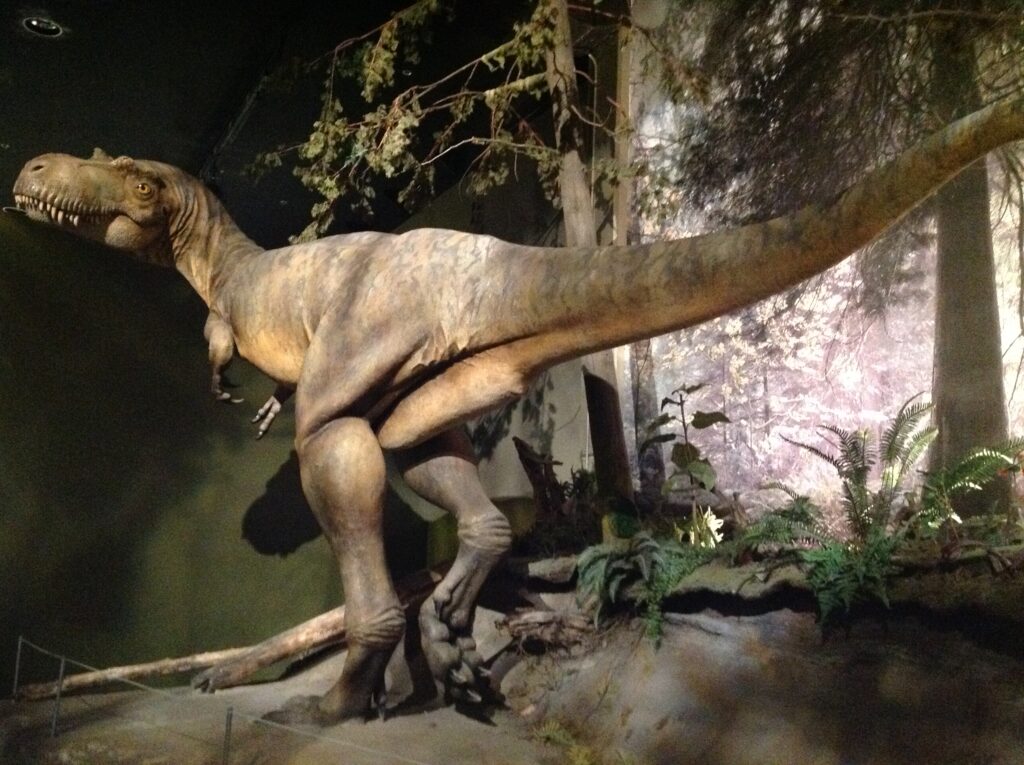
Albertosaurus existed within a complex and diverse ecosystem populated by a fascinating array of contemporaneous dinosaurs and other creatures. The most numerous prey animals would have been hadrosaurs (duck-billed dinosaurs) like Edmontosaurus, which traveled in large herds across the landscape. Sharing the ecosystem were distinctive horned dinosaurs, including Pachyrhinosaurus and Anchiceratops, whose elaborate frills and horns served as defense against predators like Albertosaurus. Smaller dinosaurs such as the dome-headed Pachycephalosaurus and swift ornithomimids (ostrich-mimics) added to the diversity, while armored ankylosaurs provided additional herbivore variety with their tank-like bodies. The skies above were patrolled by pterosaurs and primitive birds, while the waterways contained turtles, crocodilians, and various fish species. Not alone as a predator, Albertosaurus shared its carnivorous niche with smaller dromaeosaurids (raptor dinosaurs) like Saurornitholestes, creating a complex predator hierarchy. Small mammals, amphibians, and a variety of insect species rounded out this vibrant Cretaceous community, creating an intricate web of ecological relationships with Albertosaurus positioned firmly at the apex of this prehistoric food chain.
The End of an Era: Extinction and Legacy
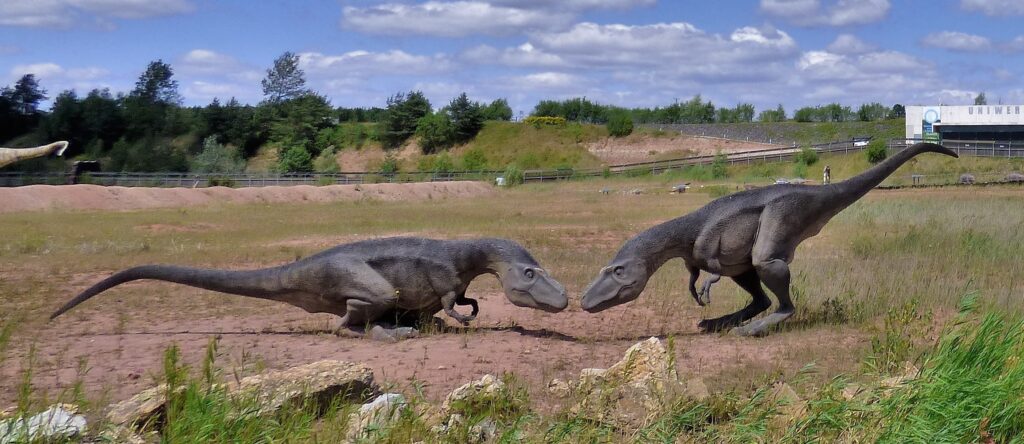
Albertosaurus vanished from the fossil record approximately 68 million years ago, roughly 2 million years before the catastrophic Cretaceous-Paleogene (K-Pg) extinction event that would claim all remaining non-avian dinosaurs. The timing of Albertosaurus’s disappearance remains somewhat enigmatic, potentially related to regional environmental changes or competitive displacement by other evolving tyrannosaur species. Though Albertosaurus itself didn’t witness the asteroid impact that ended the Mesozoic Era, its evolutionary legacy continued through related tyrannosaurs like Tyrannosaurus rex, which dominated until the final extinction. The disappearance of Albertosaurus represents a fascinating chapter in dinosaur evolution, demonstrating how even successful predatory lineages faced turnover and replacement through natural evolutionary processes. While its direct lineage ended, Albertosaurus contributed to the evolutionary innovations that made tyrannosaurs among the most successful predator groups in Earth’s history, with their distant relatives—birds—continuing to thrive today. The extinction of Albertosaurus serves as a reminder that even dominant species face vulnerability to changing environments and competitive pressures, a lesson with relevance to modern conservation biology.
Scientific Impact: Research Milestones and Discoveries
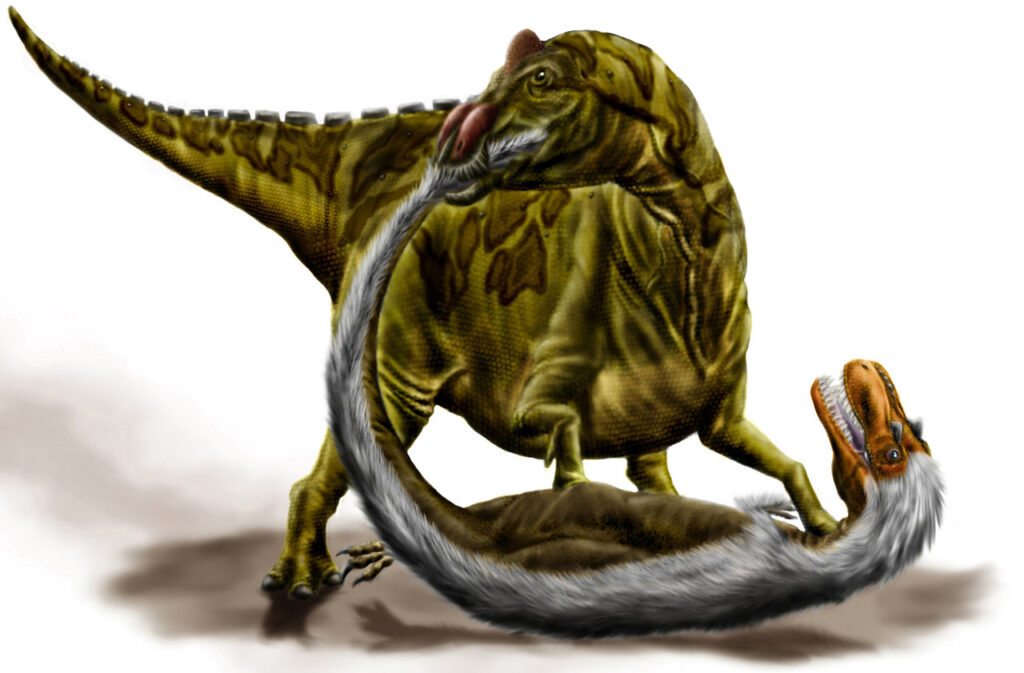
Since its initial discovery, Albertosaurus has been at the center of numerous groundbreaking paleontological studies that have transformed our understanding of theropod dinosaurs. The exceptional preservation of multiple specimens has allowed scientists to conduct detailed biomechanical analyses of its locomotion, suggesting Albertosaurus could achieve higher running speeds than previously thought possible for large theropods. Microstructural studies of Albertosaurus bones, pioneered by paleontologist Gregory Erickson, revealed growth patterns that helped establish methods for determining dinosaur ages and growth rates, techniques now applied across dinosaur paleontology. The discovery of possible stress fractures in Albertosaurus leg bones has provided insights into the physical demands faced by active predators, while bite mark analyses on prey species have helped reconstruct predator-prey dynamics in Late Cretaceous ecosystems. Perhaps most significantly, Dr. Philip Currie’s extensive work on the Dry Island bone bed revolutionized theories about tyrannosaur social behavior, changing the scientific consensus from viewing them as primarily solitary to potentially social animals. These research milestones highlight how this single dinosaur species has contributed disproportionately to advancing our broader understanding of dinosaur biology, behavior, and paleoecology.
Albertosaurus in Canadian Culture: A National Prehistoric Symbol

Albertosaurus has transcended its scientific significance to become an enduring cultural icon within Canada, symbolizing the nation’s rich paleontological heritage. The Royal Tyrrell Museum in Drumheller, Alberta, features spectacular Albertosaurus displays that draw thousands of visitors annually and serve as a centerpiece for dinosaur tourism in the region. This dinosaur’s distinctive profile has appeared on Canadian postage stamps, coins, and various provincial promotional materials, cementing its status as a prehistoric ambassador for Canadian identity. Public art installations featuring Albertosaurus can be found throughout Alberta, most notably the dramatic life-sized sculptures at the entrance to Dinosaur Provincial Park, a UNESCO World Heritage Site. Schools across Canada incorporate Albertosaurus into educational curricula as a tangible connection to the continent’s prehistoric past and to illustrate principles of evolution and extinction. Indigenous perspectives have also been incorporated into modern interpretations of Albertosaurus, with collaborative projects between paleontologists and First Nations communities exploring how this ancient predator connects to traditional knowledge systems. Through these various cultural expressions, Albertosaurus has become more than just a scientific specimen—it represents a point of national pride and a distinctive element of Canadian heritage.
Modern Research Techniques: New Insights into an Ancient Predator
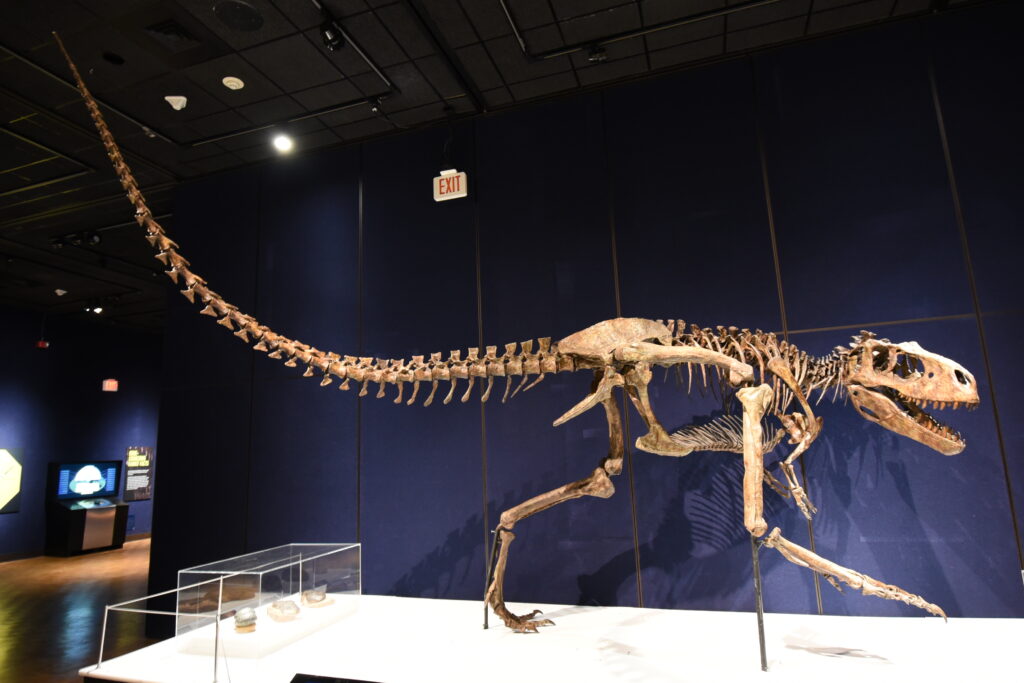
Contemporary paleontological methods have revolutionized our understanding of Albertosaurus, extracting unprecedented details from fossil remains that have been known for over a century. Advanced CT scanning technology now allows scientists to examine the internal structure of Albertosaurus skulls, revealing details about brain anatomy, sensory capabilities, and even potential intelligence levels without damaging precious specimens. Sophisticated computer modeling of the musculoskeletal system has enabled researchers to simulate how Albertosaurus moved, hunted, and interacted with its environment with greater precision than ever before. Isotopic analysis of fossilized teeth and bones provides insights into the dinosaur’s diet and metabolism by examining chemical signatures preserved for millions of years. Comparisons with modern analogues through phylogenetic bracketing—studying Albertosaurus’s closest living relatives, birds and crocodilians—help inform hypotheses about soft tissue structures, behaviors, and physiological processes that don’t fossilize. Perhaps most excitingly, advances in ancient DNA recovery techniques, though not yet successful with dinosaurs as old as Albertosaurus, continue to push boundaries that may someday yield genetic information about these magnificent creatures. These cutting-edge approaches represent the future of Albertosaurus research, promising to unlock even more secrets about Canada’s most famous carnivorous dinosaur.
Conclusion
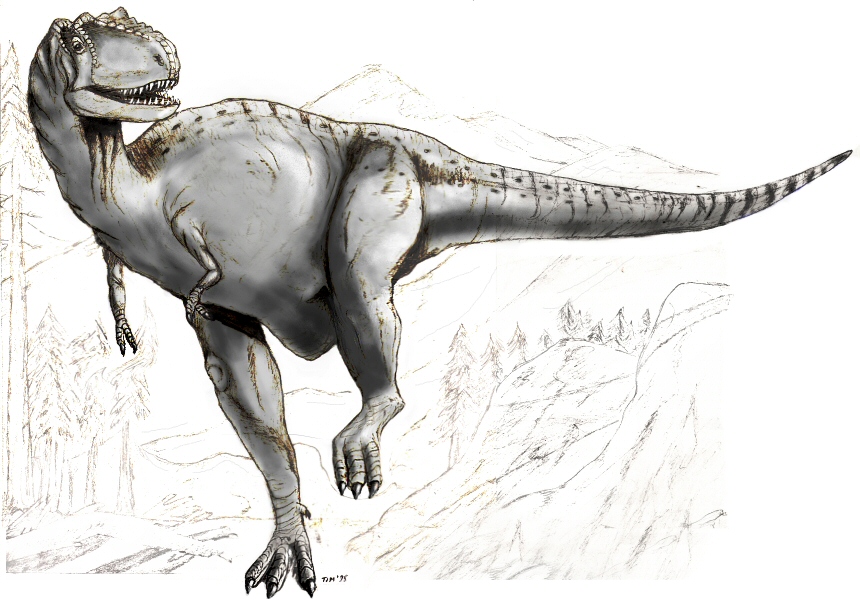
Albertosaurus sarcophagus stands as a testament to Canada’s rich paleontological heritage and continues to fascinate scientists and the public alike. From its discovery in the late 19th century to the cutting-edge research techniques employed today, this remarkable tyrannosaurid has revealed crucial insights into dinosaur evolution, behavior, and ecology. As excavations continue and technology advances, our understanding of Albertosaurus grows ever more sophisticated, painting an increasingly detailed picture of life in Cretaceous North America. Beyond its scientific significance, Albertosaurus has become deeply embedded in Canadian cultural identity, serving as a powerful symbol of the nation’s prehistoric past. Whether through museum exhibits, educational programs, or artistic representations, this iconic predator connects us to a time when Canada’s landscape was dramatically different yet equally vibrant with life. As we continue to unravel the mysteries of Albertosaurus, we gain not only knowledge about a magnificent prehistoric creature but also a deeper appreciation for the dynamic history of our planet and the remarkable creatures that once ruled its surface.


